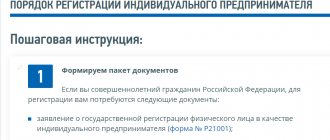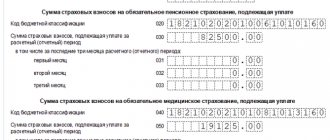Why keep financial reports?
In business, there are usually two reports for managing money: accounting and financial.
Accounting reports are created to be submitted to the tax office, and financial accounting helps to see the real situation with money in a business and make decisions. Often the owner prepares financial statements independently or together with a financial manager. An entrepreneur always has more important things to do than reporting. You need to sign a new contract, negotiate with a supplier, or go to production. Therefore, reporting is carried out from time to time, expenses and income are forgotten to be taken into account, indicators are not calculated, and expenses are not classified. This approach works until the entrepreneur faces serious financial problems - a cash gap or deficit, loss of key customers or late payments.
Business analysis practice on QlikView, Qlik Sense, Tableau
Too often, financial reports are a cross between spreadsheets and dashboards, filled with poorly labeled and unreadable graphs, 3D effects and speedometers that simply don't convey information to decision makers.
Although recent trends in data visualization have improved the situation, major problems in financial reporting have not yet been solved. Countless reports and presentations are created every day in organizations, in different formats, lengths, shapes and colors, depending on the personal preferences of the person preparing them. Result? Managers don't gain insight from the data provided to them, time is wasted, and stakeholders don't make important decisions.
Solution? International Business Communication Standards (IBCS) consistently define the shapes and colors of actuals and budgets, variances, various key performance indicators, etc. IBCS is a set of guidelines and best practices that have gone viral in Europe and have solved business communication problems in many companies such as Coca-Cola, SAP, Bayer, Roche, Swarovski, Lufthansa, Philips, etc.
I like to call them “road signs for guidance.”
I'll explain why, but first let's take a look at what the profit and loss statements look like for the above companies:
I hope you agree that they are clean, clear, precise, intuitive and expressive.
They are carefully structured and designed to intentionally direct the reader's attention to critical business values. In FP&A, this often means a difference from budget, or from the previous year, or both.
They are easy to understand visually, but above all, they are extremely consistent.
Let me repeat this: consistent.
The same colors and the same shapes always mean the same thing. The terminology is consistent. Even icons and fonts are used consistently.
Do we need a standard for business communication???
Yes, standards in our daily life are very practical. They simplify our decisions, allow us to work more efficiently and, in most cases, improve our lives.
If you see this red sign (brick) while driving, you immediately know what to do. Even if you go to Canada or decide to rent a car in Europe, you will still know what this sign means.
Think about it. You see a sign and you take action... You see a certain shape and color and you make your decision. Why? Because it's always the same! You have learned it for life. It is in the back of your mind, so you don't think about it. You don't waste your precious time deciphering it, you just take action.
Now imagine that each country, each state, or even each city uses its own set of road signs. Perhaps using the mayor's favorite color (camelia pink? Bermuda turquoise?), a strictly oval shape to suit someone else's personal preference, or a patterned polka dot pattern to follow the latest fashion.
Or, perhaps, in a neighboring city there are completely different technologies for creating signs, and they end up with completely different objects.
It sounds comical, but this is exactly what we do in business communication:
- Today we use blue bar charts for sales, tomorrow it's a multi-colored pie chart.
- If an accountant prepares a financial report, it's likely a massive spreadsheet with all the numbers displayed to two decimal places. Font size – 8! If you're lucky...
- If the document is made by the marketing department, then they develop it strictly in corporate colors, with a huge logo at the top. As much as possible. Definitely a lot of pie charts.
- Frankie writes "Million Dollar Sales" while Johnny uses "Net Income $1 Million". Dr. Jekyll writes "October YTD," but Mr. Sait prefers "2017/1/1 - 2017/10/31." Of course, they all send their tests to the same person (their boss). Poor guy.
- If you use Excel, your report looks like a myriad of numbers just sent to jail. If you're a QlikView user, I'm sure it's filled with fantastic speedometers. 3D if possible.
If that's not convincing enough, just type the word "dashboard" into a search engine and see what Google shows you.
Feeling lucky? Voila!
A beautiful sight, isn't it?
We have standards in traffic, music, maps, electricity, technology, etc. Almost everywhere except business.
It always occurred to me that report designers simply don't feel the pain of their readers.
This is the leadership we are talking about. Let's show them some sympathy. Let's stop wasting their time!
The way you present financials is important and can make a huge difference. "Range of action" can be reduced enormously. People will actually start reading the reports they receive. And above all, they will understand the workings of the business in much more detail.
Just like road signs, financial statements should have a standardized design.
That's why, like road signs, financial statements must be standardized. I see a road sign, I think, and I make a decision. I see a business diagram, analyze and make a business decision.
Dr. Hickert's International Business Communication Standards
It was in the 90s when Dr. Rolf Hichert, a renowned German professor, tried to standardize the way analysts presented data in their reports, dashboards, and presentations. His highly successful work culminated in 2013 with the public release of the International Business Communication Standards (IBCS), the world's first practical proposal for standardized business communication design.
So how does IBCS work?
Let's start with a simple example:
This is a typical grouping or "cluster" column chart representing actual and budgeted sales figures. The purpose of this visualization is to compare sales and budget.
Is it effective?
First, we need to understand that the blue bars represent actual values and the red bars represent budget. Why blue? Why red? The color assignment is completely arbitrary, perhaps just a random default by the software tool. Secondly, it is difficult to estimate deviations from the budget. Did we go over budget or under budget for a particular month? How long?
Now let's look at the same data set as presented in IBCS.
Actuals are shown as dark gray full bars, and the budget is shown as an outline. We call it a script: the budget is an empty frame that will eventually be filled with action. It's very intuitive and preserves colors so we can apply them to more important categories of data.
The variances are then explicitly calculated and visualized. Positive dispersion is green, negative dispersion is red. The user's attention is directed to deviations, which in this case are the key to understanding sales performance.
In the diagram, all texts are standardized, precise, short and displayed horizontally. The KPI name always contains a block.
IBCS Mandatory Rules
IBCS includes extensive rules and guidelines for developing business communications that help
- Organize your content using an appropriate storyline (Conceptual Rules),
- Present your content using appropriate visual design (perception rules)
- Standardize content using consistent, unified notation (semantic rules).
Here is the key part of the unified notation in IBCS:
Once you apply the IBCS rules to your standard variance report, it will look something like the image below.
As you may have noticed, this report has several distinctive features:
- Key message (heading) – at the top,
- Description of the title - under the key message,
- No embellishments (logos, images, corporate images, colorful backgrounds, borders, etc.)
- Clear column structure (PY for previous year on the left, AC for actual and BU for budget on the right, always in that order),
- Scenario markers in column headers (gray for PY, black for AC and outline for BU),
- Deviations are visualized by red/green plus-minus diagrams and built into the table,
- Absolute deviations (ΔPY, ΔBU) are displayed as histograms, and relative deviations (ΔPY%, ΔBU%) are displayed as pin diagrams
- Semantic axis in charts: gray axis for variance to PY (gray = previous year), two-line axis for deviation from budget (outline = budget)
- Numbered comments that should be written on the same page of the report.
At the same time, we have achieved a coherent system of signs - language. This is the international business language that FP&A professionals will need to start speaking to take the effectiveness of their business communications to the next level.
Source: ibcs-a.org. Coca-Cola İçecek uses Zebra BI for internal IBCS reporting in Excel.
Okay, I like the idea, where to start?
The IBCS standard offers two rather bold ideas:
- Reports should look the same (or at least be very similar) in any company, regardless of industry or size - from a multinational pharmaceutical corporation to a bank, a mid-sized consulting company or a startup.
- Reports should look the same (or at least be very similar) regardless of the software users are using.
In short, this applies to every report in any type of company, made using any software tool. This implies that this point probably applies to you, my dear reader!









